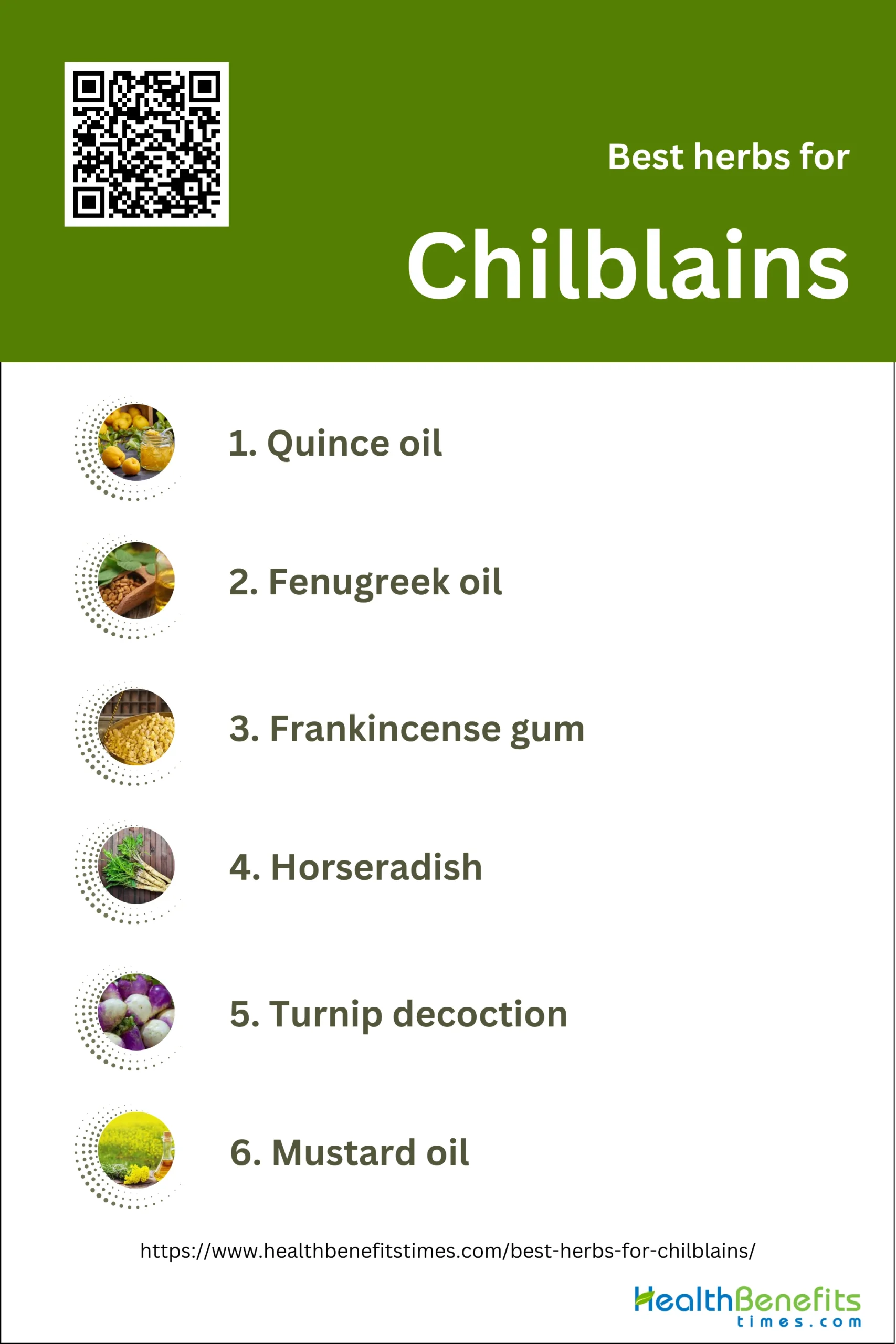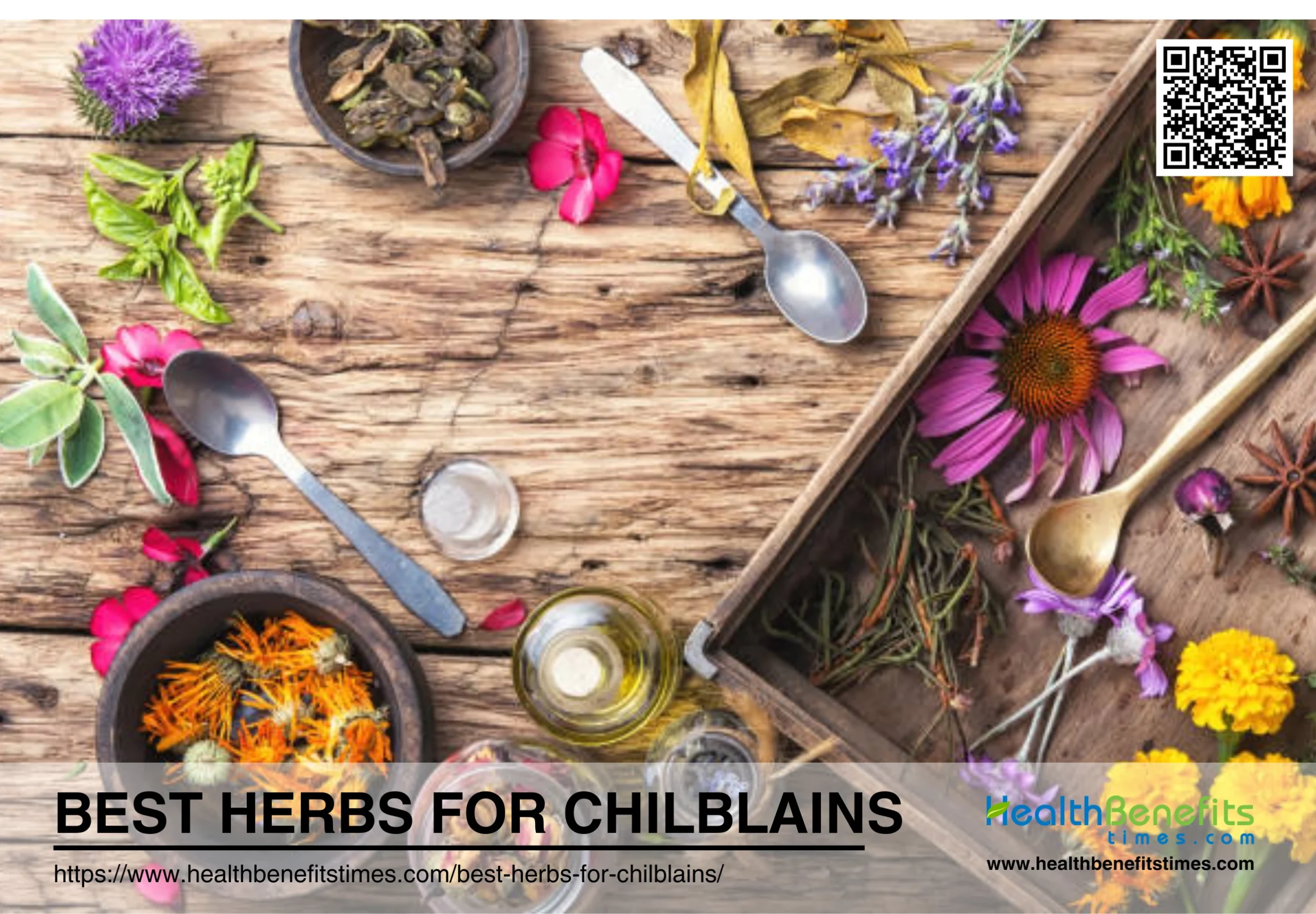 Chilblains, also known as erythema pernio, are localized erythematous and edematous lesions that typically affect the extremities of individuals predisposed to cold weather conditions. These lesions are characterized by painful, pruritic red-to-purple papules that appear on the acral surfaces of fingers, toes, ears, and nose, and less commonly on the thighs and buttocks. The condition arises due to an abnormal vascular response to cold exposure, leading to inflammation and, in some cases, ulceration. Chilblains are more prevalent in young, slim women and can be exacerbated by cultural and economic factors, such as the wearing of short skirts and thin stockings in cold climates. While generally benign, chilblains can be associated with systemic conditions like systemic lupus erythematosus and other immune-mediated inflammatory disorders. Management primarily involves avoiding cold exposure and symptomatic treatment, with calcium channel blockers like nifedipine being one of the most evaluated treatments, although their effectiveness is not universally confirmed.
Chilblains, also known as erythema pernio, are localized erythematous and edematous lesions that typically affect the extremities of individuals predisposed to cold weather conditions. These lesions are characterized by painful, pruritic red-to-purple papules that appear on the acral surfaces of fingers, toes, ears, and nose, and less commonly on the thighs and buttocks. The condition arises due to an abnormal vascular response to cold exposure, leading to inflammation and, in some cases, ulceration. Chilblains are more prevalent in young, slim women and can be exacerbated by cultural and economic factors, such as the wearing of short skirts and thin stockings in cold climates. While generally benign, chilblains can be associated with systemic conditions like systemic lupus erythematosus and other immune-mediated inflammatory disorders. Management primarily involves avoiding cold exposure and symptomatic treatment, with calcium channel blockers like nifedipine being one of the most evaluated treatments, although their effectiveness is not universally confirmed.
Types of Chilblains
From the common acute form that flares up in cold weather to more chronic types that may persist throughout the winter season, understanding the different types of chilblains is key to effective management and treatment. Let’s explore the various forms of this condition to help you identify which type might be affecting you or someone you care for.
- Idiopathic (primary) chilblains
- Chilblain lupus erythematosus
- Familial chilblain lupus
- Drug-induced chilblains
- Chilblains associated with infections (e.g. hepatitis B/C, COVID-19)
- Chilblains associated with hematological conditions and malignancies
- Pregnancy-related chilblains
- Post-traumatic chilblains
- Occupational Chilblains
- Chilblains in Predisposed Individuals
Common Causes of chilblains
While exposure to cold and damp conditions is the primary culprit, several underlying factors can increase the likelihood of developing chilblains. From environmental triggers to individual predispositions, understanding the common causes of chilblains can help you take proactive steps to prevent them. In this post, we’ll explore the key causes behind chilblains and provide insights into why they occur more frequently in certain individuals and settings.
- Exposure to cold, damp conditions
- Poor circulation
- Raynaud’s phenomenon
- Connective tissue diseases (e.g. lupus, scleroderma)
- Low body weight/anorexia
- Smoking
- Hormonal changes (e.g. during pregnancy)
- Certain medications (e.g. beta-blockers)
- Genetic predisposition
- Living in areas with cold, humid climates
- Wearing tight or damp footwear
- Sedentary lifestyle
- Peripheral neuropathy
- Cryoglobulinemia
- Vitamin deficiencies (e.g. niacin)
Best herbs for Chilblains
Using herbs to care for chilblains instead of medication offers several advantages rooted in historical efficacy and natural benefits. Historically, various herbal remedies have been employed to treat chilblains, with notable figures like Pedanius Dioscorides and Nicholas Culpeper advocating for the use of quince oil, fenugreek oil, frankincense gum, and horseradish, among others, due to their natural properties that enhance blood flow and reduce inflammation. These remedies are often preferred for their minimal side effects compared to pharmacologic treatments, which can sometimes cause adverse reactions or require careful monitoring, as seen with medications like nifedipine and pentoxifylline. Additionally, herbal treatments align with a holistic approach to health, emphasizing prevention through maintaining warmth and activity, which can naturally resolve chilblains without the need for synthetic drugs. Thus, the use of herbs not only taps into a rich historical tradition but also offers a safer, more integrated method of managing chilblains.
1. Quince oil
Quince oil has gained attention as a potential natural remedy for chilblains due to its anti-inflammatory and skin-nourishing properties. Rich in vitamins, minerals, and antioxidants, quince oil can help soothe irritated skin and improve circulation when applied topically. Its emollient qualities may aid in moisturizing and protecting the affected areas, potentially reducing itching and discomfort associated with chilblains. The oil’s natural compounds, including pectin and tannins, may contribute to skin repair and promote healing of damaged tissue.
What Research Says?
- Based on research carried out by British Journal of Dermatology and British Journal of Dermatology, Quince oil has been historically recommended as a topical remedy for chilblains. Pedanius Dioscorides, a Greek physician and botanist, included quince oil in his list of treatments for chilblains in his monumental work “De Materia Medica” from the first century AD.
How to Use
To use quince oil for chilblains, gently warm the oil to body temperature and apply a small amount to the affected areas using circular motions. Massage the oil into the skin twice daily, preferably after bathing when skin is most receptive. For enhanced benefits, consider mixing quince oil with a few drops of peppermint or eucalyptus essential oil to improve circulation. Always perform a patch test before full application and discontinue use if irritation occurs. Remember to keep the affected areas warm and protected from further cold exposure.
Potential side effects of Quince Oil
While generally considered safe for topical use, quince oil may cause skin irritation, redness, or allergic reactions in some individuals. Excessive use might lead to skin sensitivity or photosensitivity. In rare cases, it may cause contact dermatitis. If you experience any unusual symptoms or discomfort after applying quince oil, discontinue use immediately and consult a healthcare professional.
Who should avoid Quince Oil
Pregnant and breastfeeding women should consult their healthcare provider before using quince oil, as its effects during pregnancy and lactation are not well-studied. Individuals with known allergies to quince or related fruits from the Rosaceae family should avoid using quince oil. Those with sensitive skin or existing skin conditions should exercise caution and perform a patch test first.
Interaction with medications
Quince oil may potentially interact with certain medications, particularly those applied topically. It could enhance the absorption of some drugs through the skin, potentially altering their effectiveness. Additionally, quince oil might interfere with anticoagulant medications due to its vitamin K content. Always inform your healthcare provider about any natural remedies you’re using, including quince oil, to avoid potential drug interactions.
2. Fenugreek oil
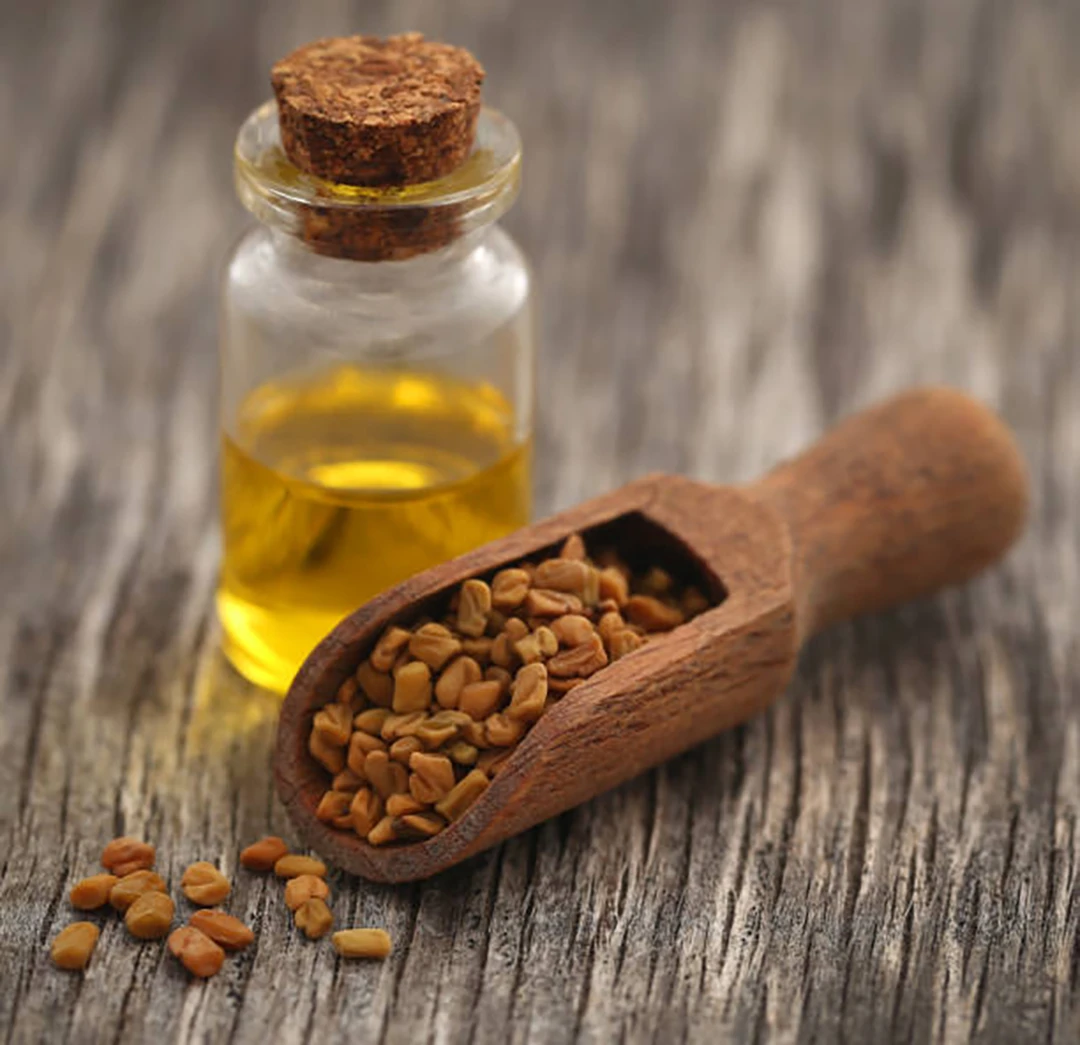
Fenugreek oil has emerged as a promising natural remedy for chilblains due to its anti-inflammatory and circulatory-enhancing properties. Rich in antioxidants and essential nutrients, fenugreek oil can help improve blood flow to the affected areas, potentially reducing swelling and discomfort associated with chilblains. Its emollient qualities may aid in moisturizing and protecting the skin, which is particularly beneficial for the dry, itchy skin often experienced with chilblains. The oil’s natural compounds, including trigonelline and diosgenin, are known for their skin-healing properties and may help in repairing damaged tissue. Additionally, fenugreek oil’s warming effect when applied topically can provide relief from the cold-induced symptoms of chilblains.
What Research Says?
- As per studies undertaken by British Journal of Dermatology and British Journal of Dermatology, Fenugreek oil has been historically listed as a topical remedy for chilblains, along with other substances like quince oil, frankincense gum, and burnt figs in wax.
- According to studies performed by British Journal of Dermatology, While many historical remedies, including fenugreek oil, have been documented, there is no specific evidence from these papers that conclusively proves their effectiveness in treating chilblains. The emphasis is often on the variety of remedies tried rather than their proven efficacy.
How to Use
Fenugreek oil can be an effective natural remedy for chilblains, a painful inflammation of small blood vessels in the skin caused by cold exposure. To use, gently massage a small amount of fenugreek oil onto the affected areas twice daily. The oil’s anti-inflammatory properties help reduce swelling and discomfort, while its warming effect improves circulation. For enhanced results, mix fenugreek oil with a carrier oil like coconut or almond oil before application. Always perform a patch test first to ensure no adverse reactions occur.
Potential side effects of Fenugreek Oil
Fenugreek oil may cause mild side effects in some individuals, including skin irritation, redness, or itching at the application site. In rare cases, it may trigger allergic reactions, especially in people sensitive to legumes. Some users might experience a maple syrup-like odor in their sweat or urine. If any unusual symptoms occur, discontinue use and consult a healthcare professional.
Who should avoid Fenugreek Oil
Pregnant women should avoid using fenugreek oil, as it may stimulate uterine contractions. Individuals with diabetes should use caution, as fenugreek can affect blood sugar levels. Those with hormone-sensitive conditions, such as certain cancers or endometriosis, should consult a doctor before use. People allergic to peanuts or chickpeas may also be sensitive to fenugreek and should avoid it.
Interaction with medications
Fenugreek oil may interact with certain medications, potentially affecting their efficacy. It can enhance the effects of blood-thinning drugs like warfarin, increasing the risk of bleeding. Fenugreek may also interfere with diabetes medications, potentially causing hypoglycemia. Those taking thyroid hormone replacement therapy should use caution, as fenugreek might affect hormone levels. Always consult a healthcare provider before combining fenugreek oil with medications.
3. Frankincense gum
Frankincense gum, derived from the Boswellia tree, offers potential benefits for managing chilblains. Its anti-inflammatory and analgesic properties can help reduce swelling, redness, and discomfort associated with this cold-induced condition. When applied topically, frankincense gum may improve blood circulation in the affected areas, promoting faster healing. The natural warming effect of frankincense can also provide relief from the characteristic itching and burning sensations of chilblains. Additionally, its antiseptic qualities may help prevent secondary infections that can occur due to skin damage.
What Research Says?
- Research undertaken by British Journal of Dermatology reveals Frankincense gum has been historically listed as a topical remedy for chilblains, along with other substances like quince oil, fenugreek oil, and burnt figs in wax.
- Findings from research done by British Journal of Dermatology show while many historical remedies, including frankincense gum, have been documented, there is no specific evidence from these papers that confirms their effectiveness in treating chilblains. The emphasis is often on the variety of remedies tried rather than their proven efficacy.
- Research completed by British Journal of Dermatology indicates modern understanding suggests that prevention, such as keeping hands and feet warm and dry, is more effective than treatment. Chilblains typically resolve spontaneously within a few weeks without the need for specific remedies.
How to Use
To use frankincense gum for chilblains, start by diluting a few drops of frankincense essential oil in a carrier oil like coconut or jojoba. Gently massage this mixture onto the affected areas twice daily, focusing on the hands, feet, or other susceptible regions. Alternatively, add a few drops of frankincense oil to warm water for a soothing foot soak. For a more potent treatment, create a salve by melting beeswax and mixing it with frankincense oil and a carrier oil. Apply this balm to chilblains as needed for relief.
Potential side effects of Frankincense Gum
Frankincense gum may cause mild side effects in some individuals, including gastrointestinal discomfort such as nausea, stomach pain, and diarrhea. When applied topically, it can occasionally lead to skin irritation, redness, or rashes. Some people may experience allergic reactions, particularly those sensitive to other plants in the Burseraceae family. Rarely, frankincense use might result in headaches or dizziness.
Who should avoid Frankincense Gum
Pregnant and breastfeeding women should avoid using frankincense gum due to a lack of safety data. Individuals with a history of allergic reactions or a compromised immune system should exercise caution. Those with pre-existing medical conditions, especially liver or digestive system issues, should consult a healthcare professional before use. People scheduled for surgery should discontinue use at least two weeks prior.
Interaction with medications
Frankincense gum may interact with certain medications, potentially enhancing the effects of blood-thinning drugs like warfarin and increasing bleeding risk. It may interfere with the action of anti-inflammatory medications and affect blood sugar levels, impacting diabetes treatments. Additionally, frankincense might interact with drugs metabolized by cytochrome P450 enzymes, potentially altering their effectiveness or side effects.
4. Horseradish
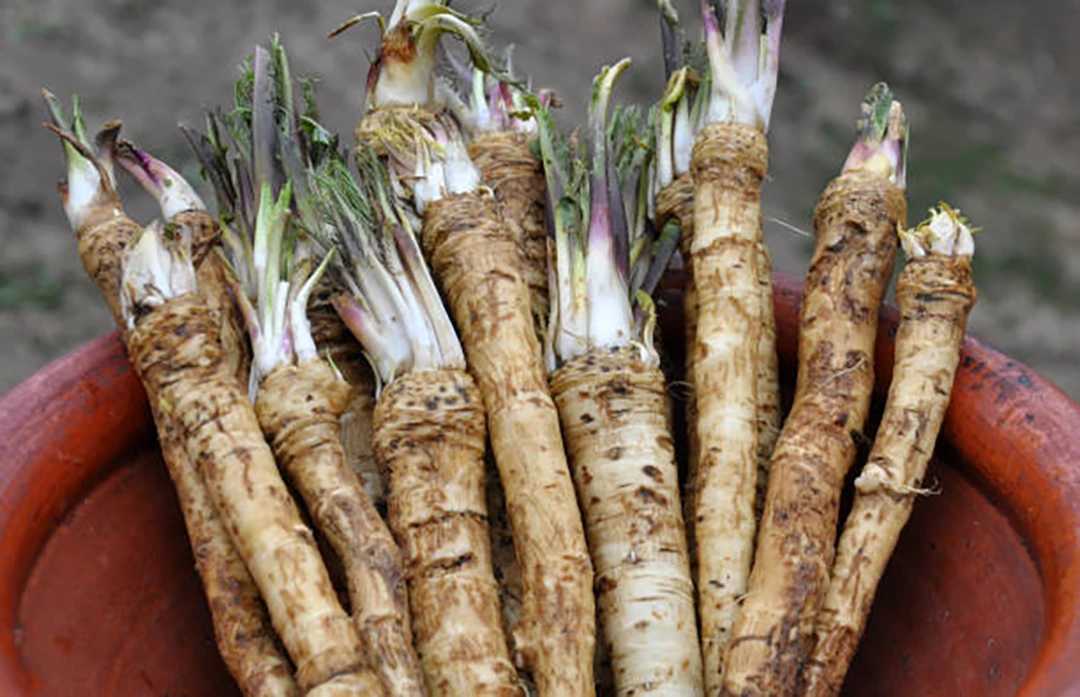
Horseradish has been traditionally used as a natural remedy for chilblains due to its potential therapeutic properties. The root vegetable contains compounds that may help improve circulation and reduce inflammation, which are key factors in managing chilblains. When applied topically as a paste or consumed orally, horseradish is believed to stimulate blood flow to the affected areas, potentially alleviating the discomfort associated with chilblains. Additionally, the pungent nature of horseradish may contribute to its warming effect on the skin, which could be beneficial for individuals suffering from this cold-induced condition.
What Research Says?
- According to investigations conducted by British Journal of Dermatology and British Journal of Dermatology, Nicholas Culpeper, an English herbalist, recommended grating horseradish and applying it as a mustard plaster to treat chilblains. The grated horseradish root produces a powerful mustard oil that acts as a rubefacient, which irritates the skin and increases blood flow, potentially alleviating the symptoms of chilblains.
How to Use
To use horseradish for chilblains, create a paste by grating fresh horseradish root and mixing it with a small amount of olive oil. Apply this mixture directly to the affected areas, avoiding broken skin. Leave it on for 10-15 minutes before rinsing off with warm water. Alternatively, consume horseradish as part of your diet to potentially improve circulation. Add grated horseradish to meals or take a horseradish supplement. Always consult a healthcare professional before using any home remedy, especially if you have sensitive skin or allergies.
Potential side effects of Horseradish
Horseradish consumption may lead to gastrointestinal irritation, causing nausea and vomiting, especially when consumed in large amounts. Topical application can result in skin irritation or allergic reactions in some individuals. Its pungent properties may also cause respiratory discomfort, particularly in those with pre-existing conditions like asthma.
Who should avoid Horseradish
Individuals with gastrointestinal disorders, such as ulcers, should avoid horseradish as it may worsen their symptoms. Pregnant and breastfeeding women should exercise caution due to potential adverse effects. Those with allergies to mustard plants should also steer clear of horseradish to prevent allergic reactions.
Interaction with medications
Horseradish may increase bleeding risk when taken with anticoagulants or antiplatelet drugs by enhancing their effects. It can also affect medication absorption due to its stimulating effects on the gastrointestinal tract. It’s crucial to consult a healthcare professional before combining horseradish with any medications.
5. Turnip decoction
Turnip decoction has been traditionally used as a natural remedy for chilblains due to its potential therapeutic properties. The decoction, made by boiling turnips in water, is rich in vitamins and minerals that may help improve circulation and reduce inflammation associated with chilblains. When applied topically or consumed as a warm drink, turnip decoction is believed to stimulate blood flow to the affected areas, potentially alleviating the discomfort and itching caused by chilblains. The high vitamin C content in turnips may also contribute to skin health and promote healing.
What Research Says?
- Research efforts by show that British Journal of Dermatology, Turnip decoction has been historically used as a warm pack to treat chilblains, as documented by Pedanius Dioscorides in the first century AD.
- As demonstrated by research from British Journal of Dermatology, Other historical remedies include quince oil, fenugreek oil, frankincense gum, burnt figs in wax, and mixtures involving gentian, crab ashes, and honey.
How to Use
To prepare a turnip decoction for chilblains, chop one medium-sized turnip and boil it in 2 cups of water for 15-20 minutes. Strain the liquid and let it cool slightly. For topical use, soak a clean cloth in the warm decoction and apply it to the affected areas for 10-15 minutes, repeating 2-3 times daily. Alternatively, drink the decoction as a warm tea, sweetened if desired, up to 3 times a day. Always test the temperature to avoid burns and consult a healthcare professional before starting any new treatment.
Potential side effects of Turnip Decoction
While generally safe, excessive consumption of turnip decoction may cause digestive discomfort, including bloating and gas. Some individuals might experience mild allergic reactions, such as skin rashes or itching. Topical application could potentially irritate sensitive skin. In rare cases, overconsumption may lead to goiter formation due to turnips’ goitrogenic properties.
Who should avoid Turnip Decoction
Individuals with thyroid disorders should exercise caution when consuming turnip decoction, as it may interfere with thyroid function. Those with known allergies to cruciferous vegetables should avoid it. Pregnant and breastfeeding women should consult their healthcare provider before using turnip decoction, as its effects on fetal development and lactation are not well-studied.
Interaction with medications
Turnip decoction may interact with certain medications, particularly those for thyroid conditions. It could potentially interfere with the absorption of levothyroxine and other thyroid hormones. Additionally, its high vitamin K content may affect the efficacy of blood-thinning medications like warfarin. Always consult a healthcare professional before combining turnip decoction with any medications.
6. Mustard oil
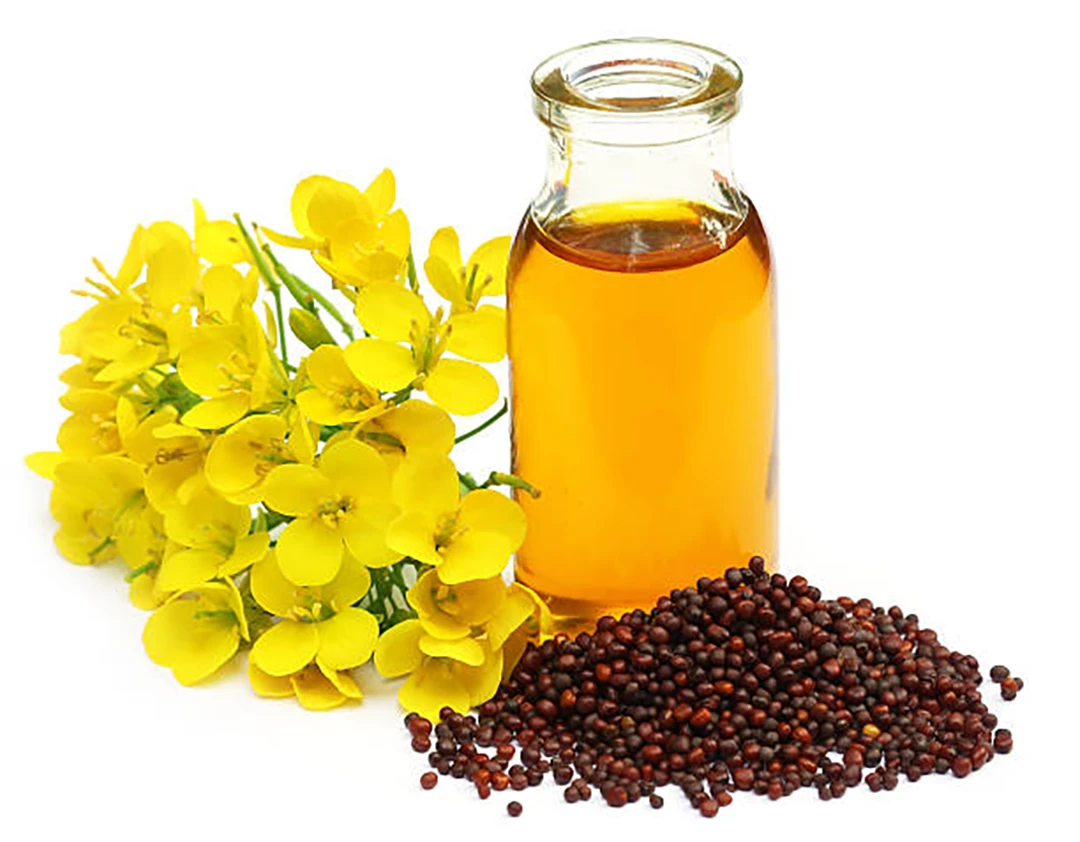
Mustard oil has been traditionally used as a natural remedy for chilblains due to its potential therapeutic properties. The oil contains compounds that may help improve circulation and reduce inflammation, which are key factors in managing chilblains. When applied topically, mustard oil is believed to stimulate blood flow to the affected areas, potentially alleviating the discomfort and itching associated with chilblains. Its warming effect on the skin can be particularly beneficial for this cold-induced condition. The oil’s high content of omega-3 and omega-6 fatty acids may also contribute to skin health and promote healing.
What Research Says?
- Research initiated by British Journal of Dermatology suggests Nicholas Culpeper, an English herbalist, recommended the use of grated horseradish applied as a mustard plaster to treat chilblains. The grated horseradish root produces mustard oil, which acts as a rubefacient, irritating the skin and increasing blood flow to the affected area.
How to Use
To use mustard oil for chilblains, gently warm a small amount of the oil until it’s comfortably hot. Massage the warm oil into the affected areas using circular motions for 5-10 minutes. Repeat this process 2-3 times daily. For enhanced effectiveness, you can mix equal parts mustard oil and coconut oil before application. Alternatively, add a few drops of mustard oil to a warm foot bath and soak the affected areas for 15-20 minutes. Always perform a patch test first to ensure you don’t have any adverse reactions to the oil.
Potential side effects of Mustard Oil
Topical application of mustard oil may cause skin irritation, redness, or a burning sensation in some individuals, especially those with sensitive skin. Allergic reactions, though rare, can occur and may manifest as itching, swelling, or rashes. Ingestion of mustard oil in large quantities can lead to gastrointestinal discomfort, including nausea and diarrhea.
Who should avoid Mustard Oil
Individuals with known allergies to mustard or other members of the Brassicaceae family should avoid using mustard oil. Those with sensitive skin or existing skin conditions should exercise caution. Pregnant and breastfeeding women should consult their healthcare provider before using mustard oil, as its effects on fetal development and lactation are not well-studied.
Interaction with medications
Mustard oil may interact with blood-thinning medications, potentially increasing the risk of bleeding. It could also interfere with the absorption of certain medications when ingested. Those taking anticoagulants, antiplatelet drugs, or medications for heart conditions should consult their healthcare provider before using mustard oil, especially if considering internal consumption.
FAQs
- Can chilblains become a recurring condition?
Yes, chilblains can become a recurring condition, especially in individuals who are frequently exposed to cold and damp conditions or who have underlying health issues that predispose them to poor circulation.
- Are there specific types of footwear recommended for preventing chilblains?
Footwear that provides insulation and keeps feet warm and dry is recommended. Avoid tight or damp shoes, and consider wearing wool or thermal socks to maintain warmth.
- Can dietary changes help in preventing chilblains?
While the article does not discuss diet, maintaining a balanced diet rich in vitamins, particularly vitamin C and niacin, can help support overall skin health and circulation, which may indirectly help prevent chilblains.
- Is there any connection between chilblains and Raynaud’s phenomenon?
Yes, chilblains and Raynaud’s phenomenon both involve abnormal vascular responses to cold. However, Raynaud’s typically presents with different symptoms, such as color changes in the fingers or toes, and may require different management strategies.
- Can chilblains occur in warm climates?
Chilblains are less common in warm climates, but they can still occur if there is sudden exposure to cold or if individuals use air conditioning excessively or are exposed to other cold environments.
- Are there any herbal remedies that should not be used together when treating chilblains?
The article does not address potential interactions between herbal remedies. However, some herbs may have overlapping effects or interact with each other, so it is advisable to consult a healthcare professional before combining multiple herbal treatments.
- How long does it take for herbal treatments to show results for chilblains?
The time frame for results can vary depending on the severity of the condition and the specific herbal remedy used. Generally, it may take a few days to weeks to notice improvement, but this can differ from person to person.
- Can chilblains be a sign of a more serious health condition?
Yes, chilblains can sometimes indicate underlying systemic conditions such as lupus or other connective tissue diseases. If chilblains are persistent or severe, it is important to seek medical evaluation.
- Are there any lifestyle changes that can help prevent chilblains?
Yes, regular physical activity, avoiding smoking, maintaining a healthy weight, and ensuring proper skin care can help improve circulation and reduce the risk of chilblains.
- Can stress or anxiety worsen chilblains?
While not directly addressed in the article, stress and anxiety can affect circulation and immune function, which may exacerbate conditions like chilblains. Managing stress through relaxation techniques and a healthy lifestyle may help.


